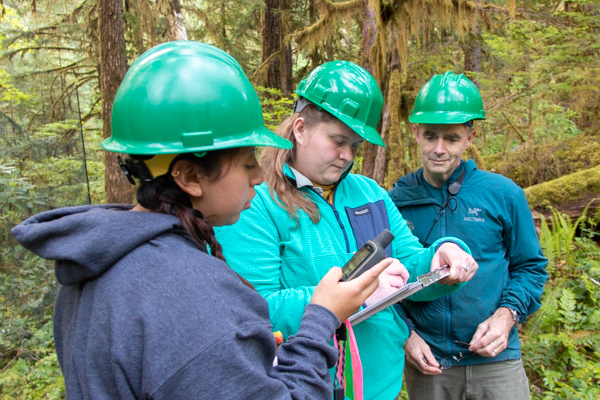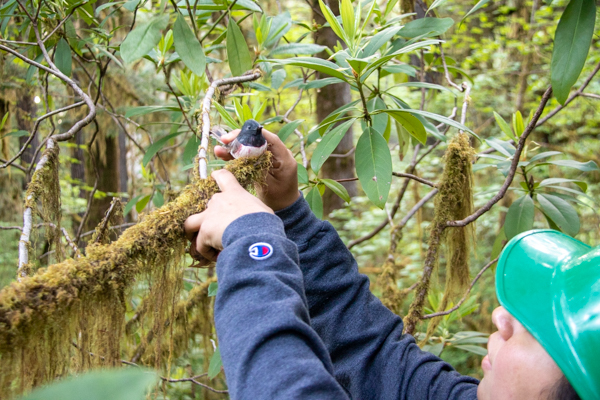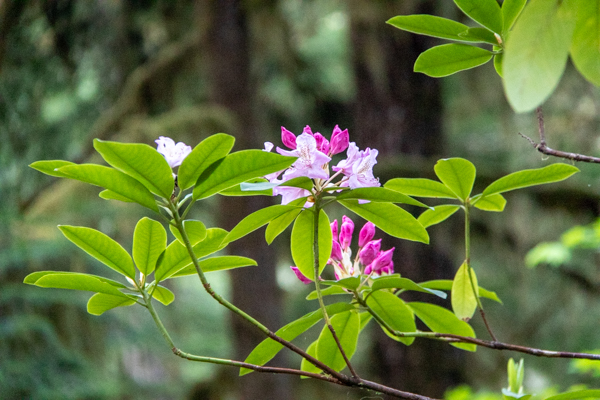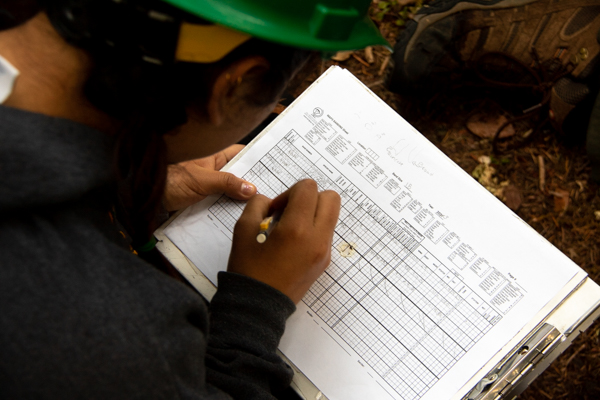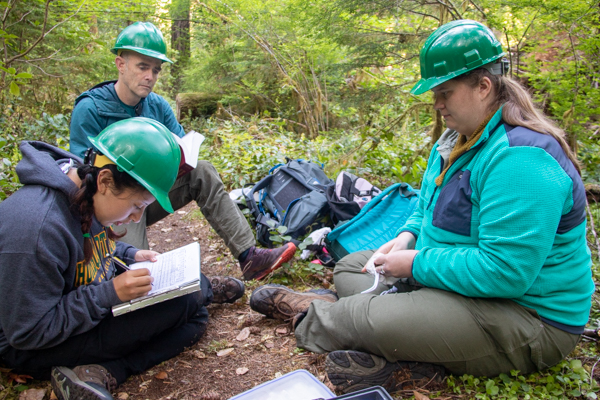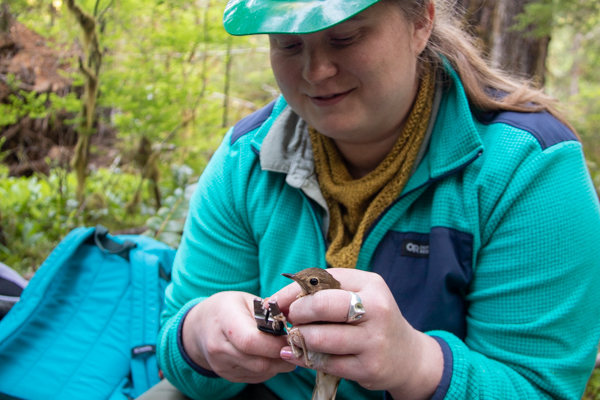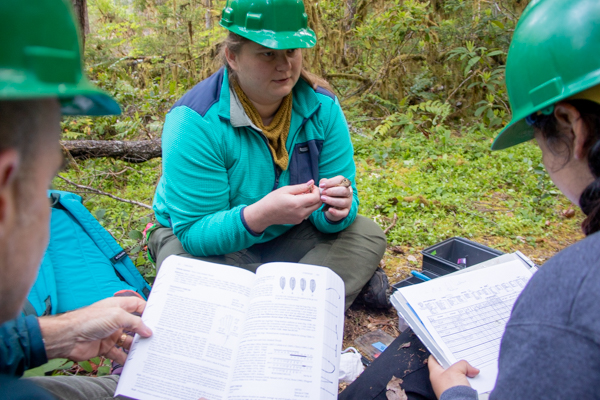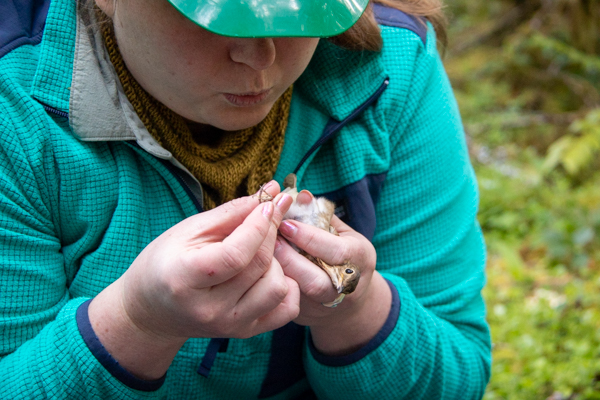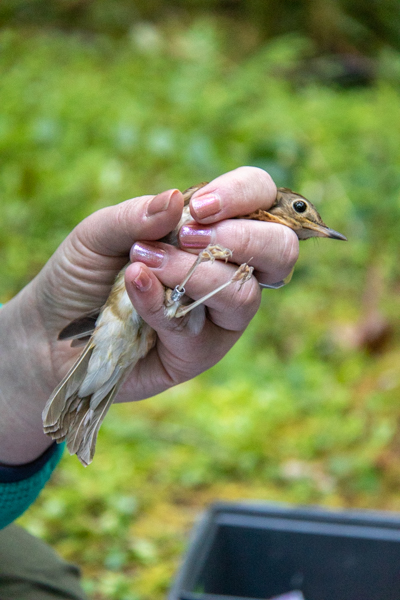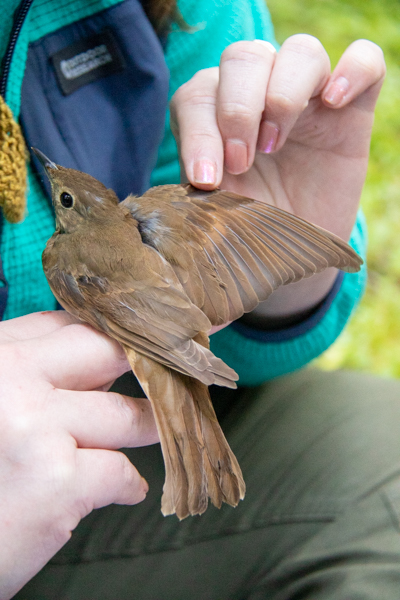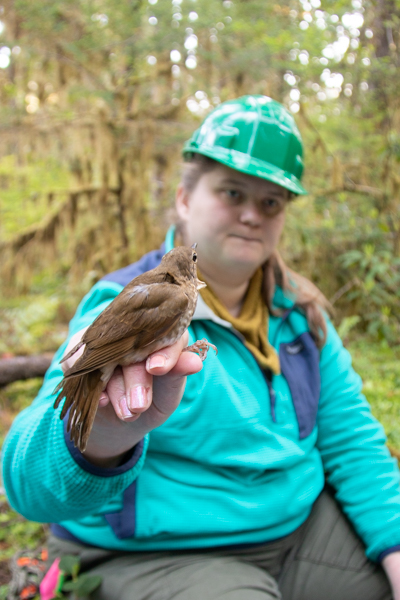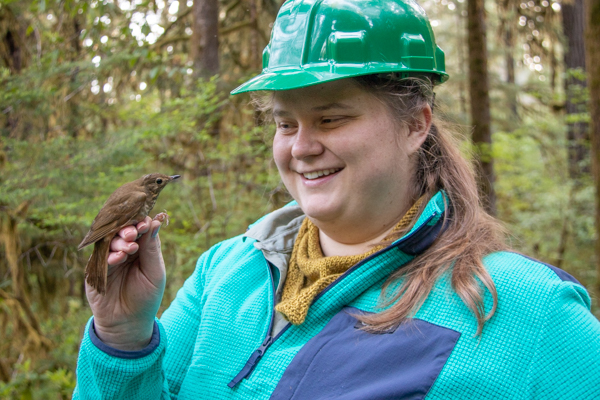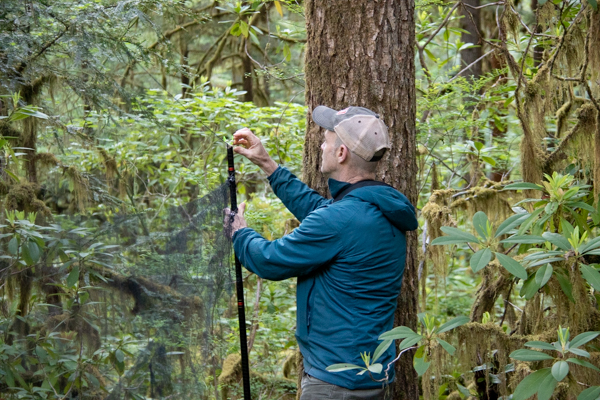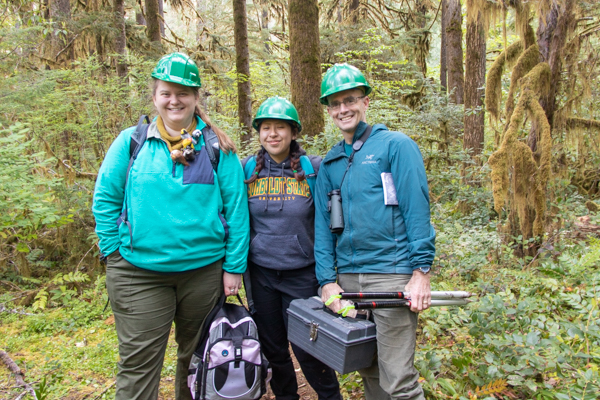Research Experience for Undergraduates (REU) intern Adlai Herrera sets up a mist net
Bird Study Spring 2023
The bird population and dynamics study is part of the Long-Term Ecological Research program at the HJ Andrews Experimental Forest. The Forest-Wide Bird Survey data include point count and bird observations from 183 sites across the forest, starting in 2009. With these data researchers are learning more about the mechanisms of bird species distributions across the landscape from year to year and even within a season. Findings suggest that old-growth forests may provide a microclimate buffering against climate warming. To fully understand the ability for old-growth forests to buffer birds from climate change, researchers are catching birds and measuring how physiological condition and species interactions shift throughout the microclimatic gradient at HJ Andrews Experimental Forest. This work will give insights on mechanisms of species distributions and implications for their survival in a changing environment.
Graduate student Madison Sutton (left) sets up a mist net
Checking GPS coordinates for the net location
Setting up for data recording
Recording data on location, date, setting for the net set up
Setting a bird decoy in a tree
Waiting, quietly, for a bird to fly into the net
REU intern Adlai Herrera carefully removes a Swainson's Thrush from the mist net
Recording data on the captured bird
Recording data on the captured bird
Carefully crimping the metal band, which has a unique identifying number
Using a caliper to measure the leg length
Assessing bird age using molt and feather wear patterns, with book reference
Blowing away the feathers reveals the chest, where fat deposits can be seen to assess fitness
The captured Swainson's Thrush, with its new bracelet
Assessing bird age using molt and feather wear patterns, with book reference
Evaluating the molt and weat patterns on the feathers assists the researchers in aging the bird
Evaluating the molt and weat patterns on the feathers assists the researchers in aging the bird
A Swainson's Thrush, and graduate student Madison Sutton
The bird is placed into a bag for two minutes so a poop sample may be collected and later analyzed to learn about what the bird ate
Bird poop samples -- new eDNA analyses can tell scientists what the bird ate
A Swainson's Thrush, and graduate student Madison Sutton
Matthew Betts (left), and graduate student Madison Sutton
REU student Adlai Herrera readies to release the bird
Samples of bird poop, soaked into the paper, are collected for analysis
Matt Betts takes down the mist net
Graduate student Madison Sutton, sporting a collar of bird decoys





